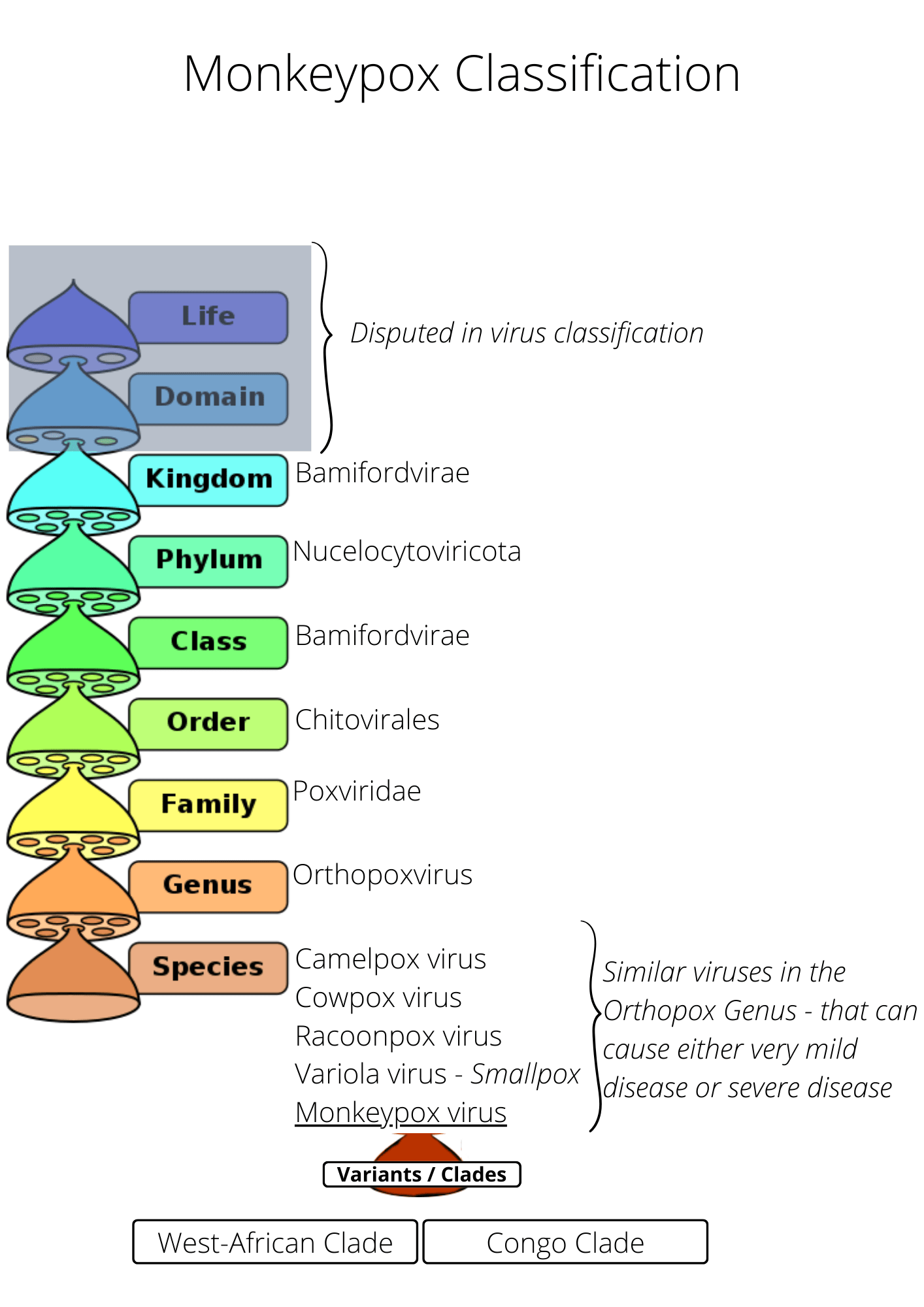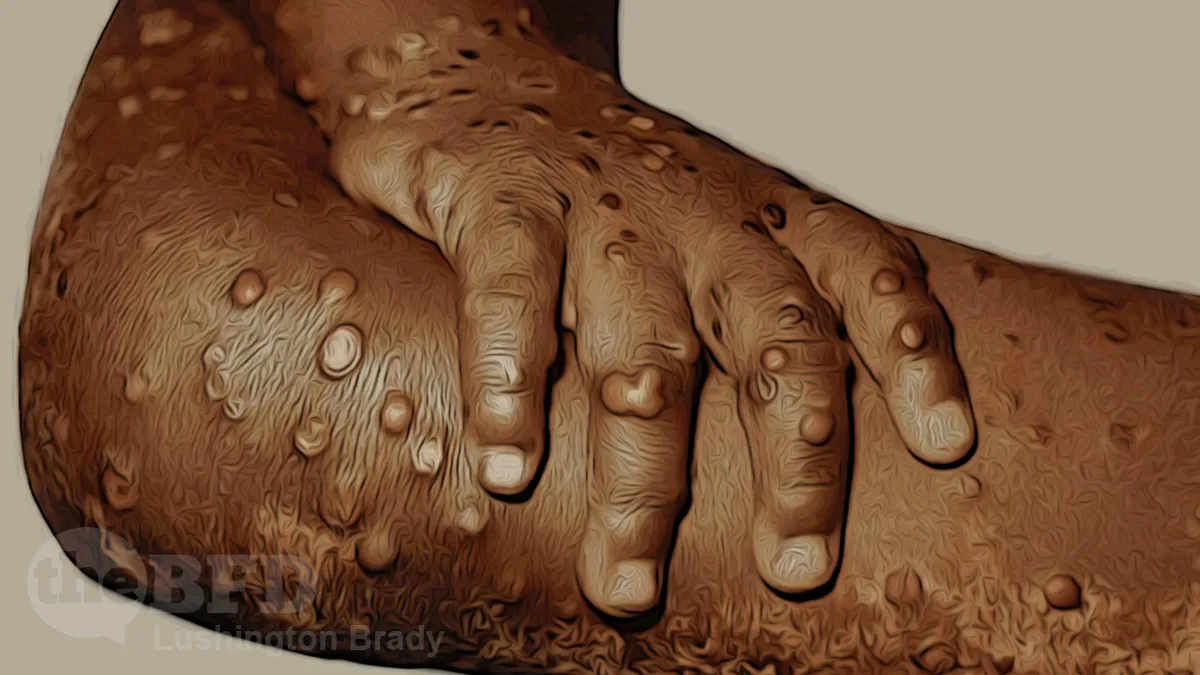Table of Contents
New Zealand Doctors Speaking Out With Science
nzdsos.com
Doctors from NZDSOS research the question: What is Monkeypox?
What is Monkeypox?
It may come as a surprise, but no doctor in NZDSOS (including the ones from Africa) has ever seen a case of monkeypox, leaving us questioning, what is monkeypox? Despite the excited reporting from overseas and New Zealand about a new threat, monkeypox is not new nor much of a threat in its natural form. Do you recall being afraid of the 2003 monkeypox outbreak in the US? Neither do we. We didn’t even hear about it. Concerns about medical literature not withstanding, using peer-reviewed medical papers and expert commentary, we discuss: what is monkeypox?
Summary
- Monkeypox is endemic in Central and West Africa
- The virus is related to but is not, Smallpox and mutates very slowly
- The virus is usually spread to humans from animals but limited human to human spread occurs
- The virus is not very infectious with an R0 (basic reproductive ratio) of <1
- Natural immunity after recovery is long-lasting
- The current outbreak has been linked to close contact through droplet spread
- Asymptomatic spread has not been seen
- Monkeypox outbreaks can be contained by standard public health measures.
The Virus
Like all biological organisims, the virus monkeypox belongs to a genus, which belongs to a family going up, in this case, to the dominium of viruses. There is dispute about whether viruses are actually under the domain of life, but that is for another time.

Even though the monkeypox virus is in the same genus as the Variola virus that causes Smallpox, this does not mean that monkeypox is the same as Smallpox. Variola can cause a severe disease in humans (Smallpox, the worst disease from Orthopoxviruses) but Cowpox causes a very mild disease in humans.
Monkeypox is a double stranded DNA virus. This means that it mutates more slowly than the single RNA viruses, such as Sars-CoV-2 which causes Covid-19.
Chickenpox, just to be confusing, is in a completely different family tree, belonging to the Kingdom, Heunggonvirae. The only thing it has in common with monkeypox is the word pox and a similar rash.
The Disease
The symptoms of monkeypox are similar to those of a mild flu-like illness, followed by the development of a rash. Initially, individuals may experience mild fever, fatigue and headache. A rash appears after 3-4 days on the palms or the face and can spread across the body. This is often accompanied by enlarged lymph nodes. The rash starts as small spots, which become raised, then form blisters which may become purulent (filled with pus) and scar.
Complications may occur and include infection with scarring, broncho-pneumonia, vomiting, diarrhoea and corneal scarring, leading to vision loss. In a publication from 1980, the CFR (case fatality rate) is given as 17% of 47 patients. However, few laboratory tests were done to confirm monkeypox and therefore exclude Smallpox. A 2020 World Health Organisation (WHO) report indicated a CFR of 3.7% (the link to this report now seems to be broken). However, not all cases were confirmed. The current outbreak seems to be caused by the West Africa clade that has a low mortality rate of around 1%. Furthermore, no deaths due to monkeypox have been recorded outside of Africa.
Monkeypox was first described in monkeys in 1958 and in humans in 1970 in the Democratic Republic of Congo (DRC) but it is likely to have been around for centuries. Two variants have been described: the West African clade which is generally mild and the Congo clade. Monkeypox can also occur in other mammals but the virus has only ever been “isolated” from one wild animal, a squirrel in DRC.
Infections in humans are mostly due to contact with infected animals (zoonotic spread) via saliva or fluid from the blisters, with faecal contact another possibility. Human to human spread can occur especially from a sick individual, to their carer in hospital or at home. Sporadic monkeypox outbreaks in Africa are likely due to initial animal to human spread, followed by human to human spread.
Interestingly the longest uninterrupted chain of human-to-human spread documented is 6 people and the R0 (basic reproduction ratio) is said to be <1. This means for every person infected, on average, less than one other person will become infected. For context the R0 of Omicron is between 7 and 10, indicating that the virus can never be contained or eliminated.
Asymptomatic spread has not been seen. Furthermore, once an individual has recovered from monkeypox, immunity against all viruses in the Orthopox genus is likely to be long-lasting. The 2003 outbreak in the US was linked to the importation of rodents from Ghana, from where the infection spread to captive prairie dogs and to 47 humans.
Vaccination
The Smallpox vaccine is said to be partially effective against monkeypox. However, significant concerns have been raised about the safety of the Smallpox vaccine. Indeed eradication of Smallpox has been argued to be due to improvement in sanitation and standard public health measures.
In the US the vaccinations are licensed only for those at high risk of contracting the disease, such as health care workers. As some Smallpox vaccines have only been licensed on the basis of animal studies, they should only be used in the context of clinical trials.
Treatment
It is important to note that due to the sporadic nature of this disease, research on the epidemiology, prevention and treatment of monkeypox is scarce. Pharmaceutical antivirals have been helpful in animal studies. NZDSOS doctors suggest improving innate immunity as a first step and then treating monkeypox like any other virus.
Controlling the Disease
Given the lack of asymptomatic spread and the low R0, this disease can be easily controlled using standard public health measures including quarantining sick patients who have been diagnosed with monkeypox (not healthy people) and those who have been in contact with sick patients.
The Current Monkeypox Outbreak
More than 200 cases have been reported to the WHO from the US, Europe, Australia and Canada. Most of the current cases seem to be among men who have sex with men (possibly linked to two large raves) and are likely to be due to close contact with transmission through respiratory droplets. Sexual transmission has not been described.
So, What is Monkeypox?
Despite the scary sounding name, monkeypox is generally a mild disease that is not easily spread and is easily contained. In most healthy people the infection will resolve by itself without needing specific treatment.









